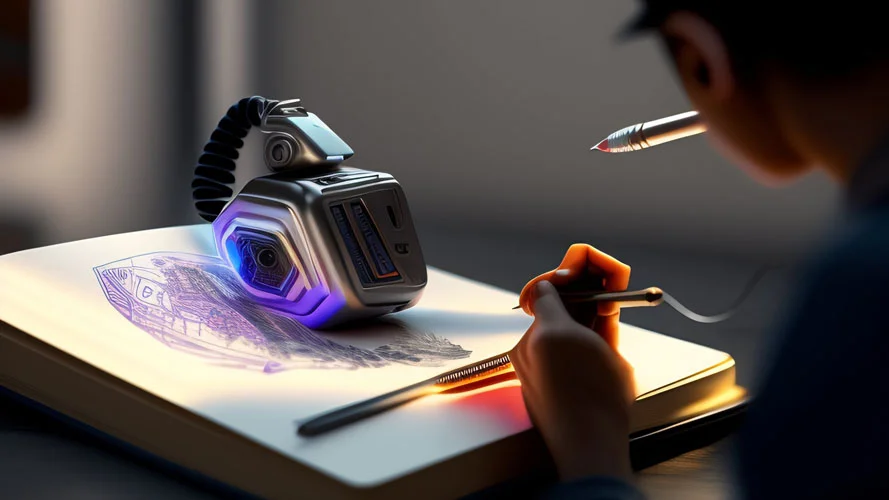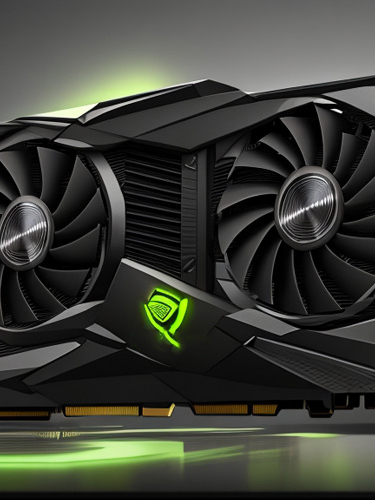Advertisement
Introduction
Welcome to the fascinating world of 3D pens! These innovative devices have revolutionized the way we express our creativity by allowing us to draw and create three-dimensional objects in real time. Whether you’re a curious beginner, a seasoned artist, or a parent looking for an engaging and educational toy for your child, 3D pens have something to offer to everyone.
In this comprehensive article, we’ll delve into the world of 3D pens, focusing on 3D pens for kids, exploring inspiring 3D pen ideas, finding the best 3D pen for your needs, mastering 3D pen art, and utilizing templates to bring your imagination to life. Throughout this journey, we’ll provide valuable insights based on personal experiences and expertise, ensuring you have all the information to unleash your creativity in a new dimension.
3D Pen: What is it and How Does it Work?
A 3D pen is a handheld device that extrudes heated plastic filaments, enabling users to draw and create three-dimensional objects. It works on the principle of heating thermoplastic materials, such as PLA or ABS, to their melting point, which then solidifies as it cools down, allowing you to build structures layer by layer.
How does a 3D pen work?
The 3D pen’s nozzle heats the plastic filament, and once it reaches the melting point, it can be smoothly extruded. The user controls the flow of plastic through the pen’s speed and direction, allowing them to create intricate and detailed designs.
Choosing the Right 3D Pen for You
Selecting the right 3D pen is crucial for a satisfying and enjoyable experience. There are several factors to consider:
1. Ergonomics and Comfort
A comfortable grip and ergonomic design are essential, especially for extended use. Look for a pen that fits comfortably in your hand, reducing strain during lengthy projects.
2. Filament Compatibility
Ensure that the 3D pen is compatible with various filament types, providing you with the flexibility to experiment with different materials.
3. Temperature Control
Temperature control is vital, as different filaments require different temperatures for optimal performance. A pen with adjustable heat settings allows you to fine-tune your creations.
4. Speed Control
Having control over the extrusion speed lets you work with precision and is particularly valuable when working on intricate details.
5. Safety Features
If the 3D pen will be used by kids, safety features such as automatic shutoff after a period of inactivity can provide peace of mind.
Unleashing Creativity with 3D Pen Ideas
The versatility of a 3D pen opens up endless possibilities for creative expression. Let’s explore some inspiring 3D pen ideas to spark your imagination:
1. Designing Custom Jewelry
Use the 3D pen to create stunning custom jewelry pieces, such as rings, pendants, and bracelets. You can add intricate patterns and unique details that are not possible with traditional jewelry-making methods.
2. Building Architectural Models
Architects and design enthusiasts can utilize 3D pens to bring their architectural visions to life. Create scaled models of buildings, bridges, and cityscapes, enabling you to visualize your designs more effectively.
3. Personalized Home Decor
Put a personal touch on your home decor by crafting 3D pen art pieces like flower vases, photo frames, and decorative sculptures. The custom-made decor adds warmth and personality to your living spaces.
4. Crafting Custom Phone Cases
Protect and personalize your phone simultaneously by designing your own custom phone cases with the 3D pen. Experiment with various colors and textures to make your phone truly unique.
5. Sculpting Artistic Figurines
Bring characters and objects from your imagination into reality by sculpting artistic figurines. Whether it’s a mythical creature or your favorite movie character, the 3D pen allows you to create intricate details with ease.
6. Educational Learning Aids
For educators and parents, 3D pens offer an excellent tool for creating interactive and engaging learning aids. Enhance lessons with 3D models that help students better understand complex concepts.
Best 3D Pen: Top Picks for Creativity Enthusiasts
Choosing the best 3D pen can be overwhelming due to the variety of options available in the market. We’ve compiled a list of top picks that cater to different needs and skill levels:
| Best 3D Pen | Key Features |
|---|---|
| PenXYZ Pro | Adjustable temperature, OLED display, ergonomic design |
| CreoCraft Junior | Kid-friendly, low-temperature nozzle, safety features |
| MasterCreate 2000X | Large OLED screen, easy filament loading, multiple speed settings |
| ArtisanCraft 3D+ | Wide filament compatibility, quiet operation, lightweight design |
| ProArtisan Deluxe | Dual-extrusion, auto-loading filament, WiFi connectivity |
3D Pen Art: Mastering the Craft
Creating art with a 3D pen requires practice and patience, but the results are immensely rewarding. Here are some tips to help you master the art of 3D pen creations:
1. Start with Basic Shapes
Begin with simple shapes like cubes, spheres, and cylinders to get comfortable with the pen’s movements and temperature settings.
2. Experiment with Filaments
Try out different filament materials and colors to add variety and visual appeal to your creations. Each filament type has its own unique properties, offering exciting possibilities.
3. Utilize Templates and Stencils
In the beginning, using templates and stencils can serve as a helpful guide to creating more intricate designs. As you gain confidence, you can start freestyling your creations.
4. Embrace Imperfections
Don’t be discouraged by minor imperfections. Embrace them as part of the handmade charm and learn from each project to improve your skills.
5. Practice Control and Precision
Achieving precise lines and details requires practice. Experiment with different pen speeds and hand movements to enhance your control over the pen.
FAQs
- Can kids safely use a 3D pen?
- Yes, many 3D pens come with safety features and lower temperature settings suitable for kids. However, adult supervision is recommended for younger children.
- Are 3D pens suitable for professional artists?
- Absolutely! 3D pens provide professional artists a unique medium to complement their traditional artistic techniques.
- How long does it take to learn 3D pen art?
- The learning curve varies for individuals, but with consistent practice, you can create impressive art within a few weeks.
- Can I refill the 3D pen with my own filament?
- Yes, most 3D pens support third-party filaments, giving you the freedom to use your preferred materials.
- Are 3D pen creations durable?
- The durability of 3D pen creations depends on the filament material used. Some materials, like ABS, offer greater durability than others.
- Can I fix the mistakes made with the 3D pen?
- While you can’t erase mistakes, you can trim, modify, or incorporate them into your design creatively.






[…] Are these printers suitable for beginners? […]
Absoultly!
[…] Pencil 3.0 comes with a suite of improved drawing tools that offer better control and precision. Artists can now create smooth lines and shapes effortlessly, making it easier to […]